Medical expert of the article
New publications
Preparations
Effective ointments for fungus
Last reviewed: 03.07.2025

All iLive content is medically reviewed or fact checked to ensure as much factual accuracy as possible.
We have strict sourcing guidelines and only link to reputable media sites, academic research institutions and, whenever possible, medically peer reviewed studies. Note that the numbers in parentheses ([1], [2], etc.) are clickable links to these studies.
If you feel that any of our content is inaccurate, out-of-date, or otherwise questionable, please select it and press Ctrl + Enter.
The ointment with fungicidal properties against fungus is a special local medicinal product used in the treatment of mycoses – superficial skin lesions caused by pathogenic dermatophyte fungi, mold and yeast fungi.
The purpose of using such ointments is to neutralize and destroy fungi, which are the fourth most common cause of human diseases.
Indications fungus ointments
Medical indications for the use of antifungal ointments cover almost the entire spectrum of non-systemic (external) fungal pathologies that develop as a result of damage by fungi Microsporum, Trichophyton, Epidermophyton, Malassezia, Exophiala, Pityrosporum, Scytalidium, Onychocola, Aspergillus, Candida, Fusarium, etc. (more than 40 species in total).
Mycologists classify such diseases as:
- dermatomycosis of various localizations (rubrophytosis, athlete's foot, inguinal epidermophytosis);
- microsporia caused by Microsporum spp. (ringworm);
- dermatophytosis of the scalp (trichosporia, trichophytosis, favus);
- onychomycosis (damage to the nail plates) and paronychia (damage to the cuticle);
- superficial candidiasis;
- versicolor, pityriasis versicolor and shingles.
An effective ointment is needed for fungus and pseudomycosis (erythrasma, axillary trichomycosis, etc.).
See also - Agents of superficial mycoses
 [ 3 ]
[ 3 ]
Release form
The names of antifungal ointments listed below are divided into subgroups - in accordance with their main purpose for treating specific fungal pathologies. Synonyms of drugs with the same active ingredient, but released under other trade names, are indicated in brackets.
Ointments for fungus for the treatment of dermatomycosis, microsporia, candidiasis of the skin:
- Terbinafine ointment (Terbifine, Terbinox, Termicon, Lamikan, Lamisil, Lamisinil, Medofloran, Mikoterbin, Exifin, Fungoterbin);
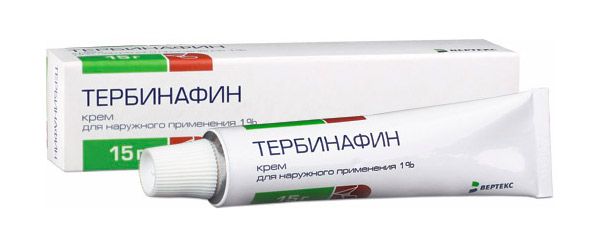
- Nizoral ointment (Ketoconazole, Ketodin, Mikosept, Mikozoral, Fungoral, etc.);
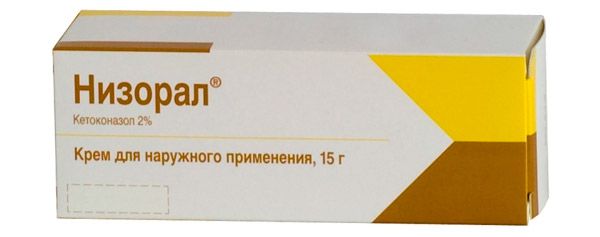
- Clotrimazole ointment (Clotrimafarm, Candid ointment, Canesten, Kanizon, Clomazol, Clotriran, Vicaderm, Lotrimin, Mycosporin, Fungitsip, etc.).
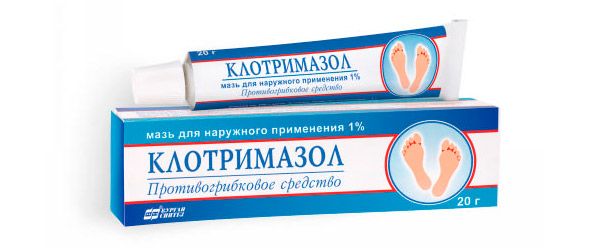
Analogues of the ointments for fungus Terbinafine, Nizoral and Clotrimazole are the drugs Canespor (Bifonazole, Bifosin, Bifunal, Mikospor); Miconazole (Miconazole Hexal, Mikozon, Daktarin); Mifungar (Oxiconazole).
Also, for dermatophytosis of various localizations and yeast fungal diseases, an inexpensive ointment for fungus Undecin (Tsinkundan, Mikoseptin) can be used.
Sulfur ointment is still recognized today as a very effective ointment against the fungus that causes favus, as well as against the fungus Malassezia furfur, which is the causative agent of seborrheic dermatitis.
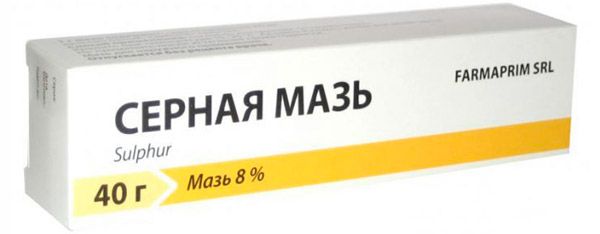
The main names of antifungal ointments used in the treatment of onychomycosis are: Exoderil (Naftifine), Clotrimazole, Mifungar, Miconazole, Lamisil (Terbinafine and other synonyms). Canespor ointment is also recommended for nail fungus; it is available in a convenient form as a kit consisting of an ointment with the addition of urea (to soften the affected nail plates), patches and a scraper (to clean the nail bed from softened keratin).
In addition, to treat onychomycosis, you can use the antifungal nail polish Lotseril or Lotseril solution (containing the antifungal agent amorolfine), as well as another special kit for removing affected horny nail plates - Mikosan.
Read also – Ointments and creams for nail fungus
Ointments recommended by dermatologists for the prevention of fungus (especially in cases of reduced immunity) are Mifungar and Miconazole, which should not be used for longer than 4-5 months.
Those who want to protect themselves from athlete's foot can get some help from the cosmetic foot product Gribkosept, often listed as the 911 antifungal ointment. This gel contains the bactericidal phenolic substance triclosan, zinc, which dries the skin, and a set of essential oils (eucalyptus, juniper, tea tree, lavender, and sage). An antiseptic against excessive sweating of the feet is Teymurov's ointment (Teymurov's paste). Well, the so-called Norwegian ointment is, obviously, the French cream for softening the skin on the heels and calluses on the soles Neutrogena Norvegienne® Formule (Norwegian formula).
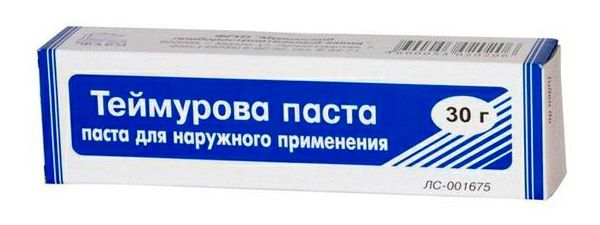
Joint pain balms produced in Thailand, which are often called "green ointment" and "blue ointment" (due to the color of the ointment base), have nothing in common with antifungal ointments. Perhaps they were referring to the aforementioned antifungal ointment Undecin, which contains undecylenic acid and copper undecylenate, which gives the product a bluish-green color.
Chinese antifungal ointments: Au Kah Chuen Fugical Cream (PN Phramaceutical) and Hua Tuo Xian Gao Antifungal Ointment (Song Hua Pharmaceutical). The first remedy, according to the instructions, can be used for mycoses and ringworm, relieving itching and inflammation due to the content of zinc oxide and diphenhydramine chloride (diphenhydramine) in the ointment. The second ointment is intended for the treatment of mycoses, scabies and eczema. It contains: clotrimazole, salicylic acid, camphor, Chimonanthus praecox plant extract and Simmonsdia сhinensis (jojoba) oil.
Additional means for treating fungus include:
- salicylic ointment (used for acne, oily seborrhea, eczema), which can be used to soften keratinization or remove scabs at the site of a suppurating fungal infection;
- zinc ointment (is a disinfectant and astringent, i.e. drying agent);
- Yam ointment (salicylic acid + zinc oxide).
In case of complications of fungal disease with the addition of bacterial infection, the following drugs are prescribed: Triderm, tetracycline ointment, antibacterial ointment Levomekol. In case of infection of the body with the fungus Sporothrix schenckii (sporotrichosis) - if subcutaneous nodes become inflamed with the formation of pus - ichthyol ointment or Vishnevsky ointment may be needed, and after removal of purulent exudate - well-healing propolis ointment.
Boron Vaseline or boric ointment (antiseptic against pediculosis), as well as Stellanin ointment (intended for the treatment of purulent wounds and abscesses, as well as abrasions, cuts and other skin lesions) are not antifungal agents.
Based on the recommendations of dermatologists and the effectiveness of therapeutic effects, the rating of antifungal ointments is headed by the antifungal drugs Clotrimazole, Ketoconazole (Nizoral), Bifonazole, Miconazole, Terbinafine and Mifungar.
Pharmacodynamics
The pharmacodynamics of many antifungal ointments, despite the different active pharmaceutical ingredients, are identical.
Thus, according to the active substance of the ointment, Clotrimazole and Candid ointment (clotrimazole), Canespor (bifonazole), Nizoral (ketoconazole), Miconazole (miconazole nitrate) belong to the group of imidazole antimycotic drugs. They disrupt the cell membranes of fungi, blocking the synthesis of ergosterol, triglycerides and phospholipids necessary for the formation of fungal cell walls. That is, the fungi cannot reproduce and die.
The mechanism of action of the active component of the ointment Terbinafine (Terbinoks, Termicon, Lamisil, Fungoterbin, etc.) - terbinafine hydrochloride, as well as the main substance of the ointment Exoderil - naftifine hydrochloride, which are synthetic antimycotics of the allylamine group, is similar. The substance of the azole group oxyconazole, which is part of the ointment Mifungar, acts on the fungus according to the same principle.
The antifungal effect of Triderm ointment is provided by clotrimazole; the antibiotic gentamicin contained in the drug fights bacterial infection, and the GCS betamethasone relieves inflammation and reduces skin itching.
Pharmacokinetics
As a rule, the instructions for external agents either do not explain the pharmacokinetics of the drugs, or provide data on the mechanism of absorption and excretion of substances in oral versions of the drug.
Terbinafine, contained in Terbinox, Lamisil and other ointments, diffuses into the skin and acts in the stratum corneum, enters the bloodstream in a minimal amount (no more than 5-6%) and is excreted through the kidneys within 24 hours. So the systemic effect of the drug is hardly possible.
Naftifine hydrochloride, the active ingredient in Exoderil ointment, behaves in the same way, but it takes twice as long to be eliminated from the body (the half-life lasts up to 48-72 hours).
Describing the pharmacokinetics of the antifungal ointment Nizoral, the manufacturers note that ketoconazole does not penetrate into the systemic bloodstream through the skin.
The instructions for the other products mentioned in the review do not cover the issue of their adsorption and biotransformation.
Dosing and administration
The antifungal ointment should be applied in a thin layer to dry, clean skin (or nails):
Terbinafine, Miconazole, Nizoral – 1-2 times a day (morning and evening), treatment can take up to one and a half months with daily use of ointments.
Clotrimazole – 2-3 times a day (followed by rubbing), duration of use – more than a month;
Triderm – twice a day, for 15-30 days;
Mifungar, Exoderil - once a day, the course of treatment ranges from two to four weeks, but can last up to two months; in case of onychomycosis, the affected nail plates should be softened and removed, the Kanespor and Mikosan kits will help with this.
Undecin, Tsinkundan and Mikospor ointments should be applied daily for three weeks – once a day.
As the manufacturers of the listed ointments note, their overdose has not been identified in practice.
Use fungus ointments during pregnancy
Despite the fact that the antifungal ointment is applied locally, not all drugs of this pharmacological group can be used during pregnancy.
There is no information regarding the possibility of using Triderm, Miconazole and Undecin during pregnancy.
Mifungar ointment is prohibited during pregnancy and lactation. Clotrimazole, Terbinafine and Canespor ointments are not used during the first trimester of pregnancy, and the decision on the need for their use at later stages is made by the attending physician, who must take into account the possible risk to the fetus.
The same principles for using antifungal ointments during pregnancy apply to the drugs Exoderil and Nizoral.
Contraindications
Almost any ointment for fungus has certain contraindications for use.
Terbinafine, Clotrimazole, Miconazole, Mifungar and Canespor ointments are not used in cases of identified individual hypersensitivity to the substances of these drugs (including auxiliary ones).
Terbinafine is contraindicated for use in the treatment of fungus in children under two years of age, and Minungar - under six years of age;
Triderm is not used for tuberculosis of the skin, syphilis, rubella, chickenpox;
Miconazole and Nizoral are not recommended for use in people with liver problems;
Exoderil and Canespor are contraindicated for children and in the presence of skin damage at the site of application of the ointment;
Any inflammatory processes on the skin are an absolute contraindication to the use of ointments based on undecylenic acid (Undecin, Tsinkundan, Mikoseptin).
Side effects fungus ointments
Antifungal ointments applied to the skin surface do not have systemic side effects, but the following undesirable dermatological effects are possible:
Terbinafine – skin rash, redness, swelling of the subcutaneous tissue, necrosis of epidermal cells.
Clotrimazole, Miconazole, Exoderil, Nizoral and Undecin – local skin irritation, accompanied by hyperemia and itching.
Mifungar, Kanespor - allergic dermatitis, pain at the site of application, inflammation of the hair follicles, the appearance of cracks and oozing.
Triderm – local irritation with itching, drying of the treated areas of the skin, increased hair growth on the body, the appearance of discolored spots.
Interactions with other drugs
Interactions between the antifungal ointments Terbinafine, Triderm, Exoderil, Miconazole and Nizoral have not been identified; interactions between the ointments Mifungar Undecin have not been studied.
The simultaneous use of ointments with clotrimazole and ointments based on polyene antimycotics (Nystatin, etc.) reduces the effectiveness of the latter.
Anti-fungal ointment recipes
For those who prefer to treat themselves with home remedies, we will give recipes for ointment against fungus. The most commonly used is the so-called vinegar ointment.
This popular, but, judging by the reviews, not very effective ointment with vinegar and egg for fungus is prepared from one raw chicken protein, a teaspoon of vinegar essence and the same amount of Vaseline or glycerin. Since vinegar essence can cause a chemical burn of the skin, this remedy should be applied only to the affected area of the skin (or nail) and done very carefully.
There are also such recipes for homemade ointment against fungus:
- grated ginger root (tablespoon) + apple cider vinegar (tablespoon) + sesame oil (teaspoon).
- finely grated garlic (tablespoon) + 9% table vinegar (tablespoon) + cornstarch (1-1.5 teaspoons);
- zinc ointment (30 g) + fir oil (10-12 drops) + tea tree oil (15 drops).
Perhaps these remedies will help someone get rid of the fungus, but if there is no effect, it is better to turn to pharmacy drugs and, on the recommendation of a doctor, buy an ointment for the fungus (one of those that were named in this review).
Attention!
To simplify the perception of information, this instruction for use of the drug "Effective ointments for fungus" translated and presented in a special form on the basis of the official instructions for medical use of the drug. Before use read the annotation that came directly to medicines.
Description provided for informational purposes and is not a guide to self-healing. The need for this drug, the purpose of the treatment regimen, methods and dose of the drug is determined solely by the attending physician. Self-medication is dangerous for your health.

